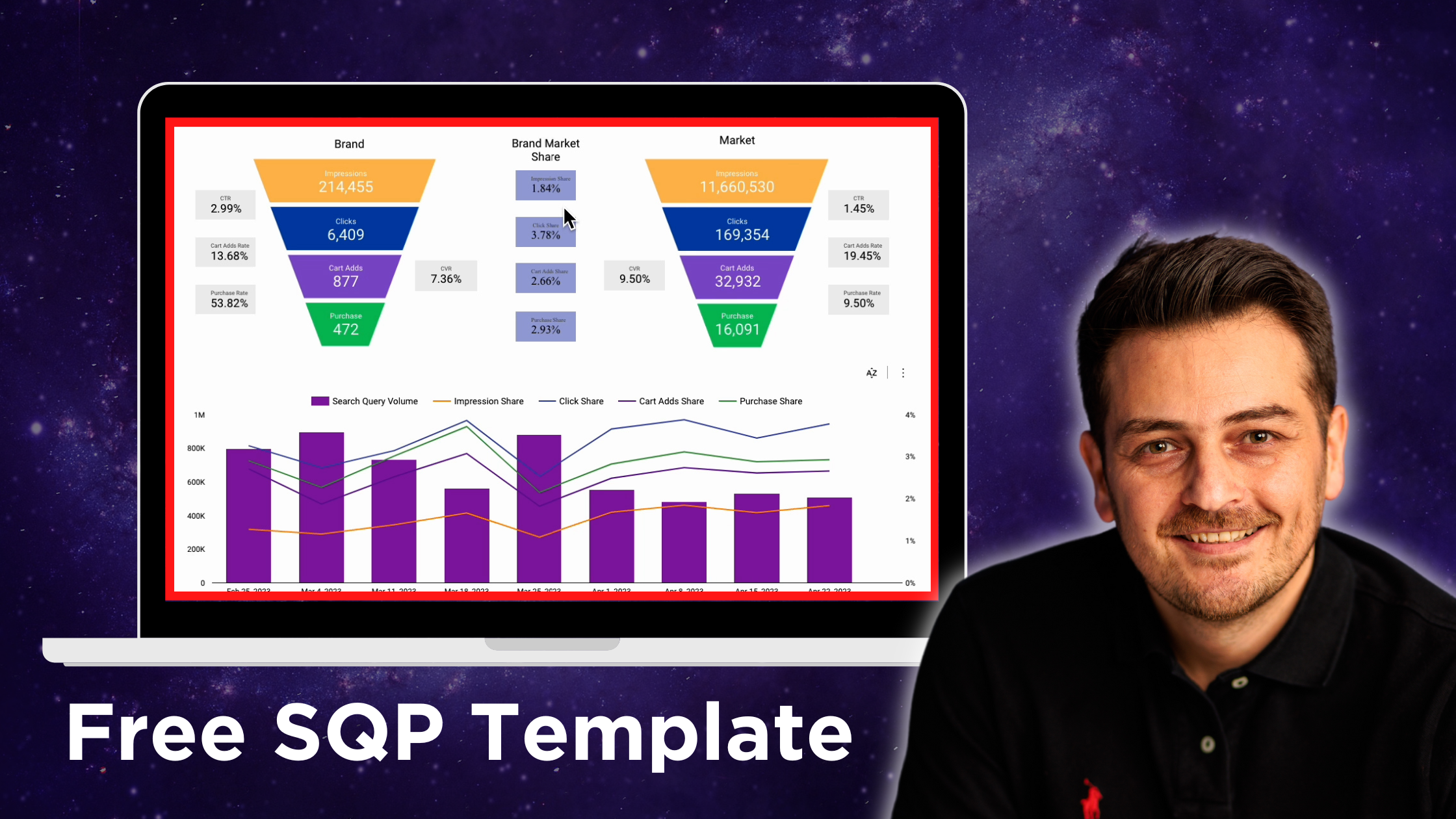Mastering competitive analysis is a crucial step for enterprise brands looking to enhance their presence and sales on Amazon, and Amazon Brand Analytics offers a powerful tool to achieve this goal. By delving into the features and benefits of this tool, businesses can gain insights into their brand’s performance, monitor trends in brand searches, and compare Customer Lifetime Value (CLTV) with competitors. Specifically, the Awareness and Purchase segments in the Advertising Console provide a comprehensive view, allowing businesses to track total brand searches, compare with category medians, and identify top performers. This blog post will explore how leveraging Amazon Brand Analytics can lead to strategic growth and competitive advantage in the ever-evolving landscape of e-commerce.
Subscribe for More Expert E-Commerce Insights!
Understanding Amazon Brand Analytics
Features and Benefits of Brand Analytics
Amazon Brand Analytics is a robust feature set provided to brand owners on Amazon, offering critical data for shaping strategic decisions. It enables brands to understand their customers better by tracking search frequency, purchase behavior, and market basket analysis. One of the key benefits is the ability to see which products are most frequently purchased together with their own. This can inform cross-promotional strategies and product bundling opportunities. Additionally, the tool provides demographic insights, such as the age and income levels of purchasers, which can be invaluable for targeted marketing campaigns. By leveraging these features, businesses can optimize their listings, improve product discoverability, and ultimately drive sales growth. Furthermore, the comparative data on CLTV is instrumental in benchmarking against competitors, helping brands to refine their customer acquisition and retention strategies.
How to Access Amazon Brand Analytics
Accessing Amazon Brand Analytics is straightforward for those who are registered with Amazon’s Brand Registry. Once logged into your Amazon Seller Central account, navigate to the ‘Brands’ menu and select ‘Brand Analytics’ from the dropdown. This grants you entry into a dashboard rich with data tailored to your brands’ performance on the platform. It’s important to note that these analytics are only available to brand owners who have established their brand’s presence on Amazon, ensuring that the data provided is relevant and actionable. The suite of tools within Amazon Brand Analytics is designed to be user-friendly, allowing even those who are not data experts to glean meaningful insights quickly. Regular use of these analytics can help brands stay ahead of the curve in a competitive marketplace by making data-driven decisions.
Leveraging Brand Analytics for Business Growth
Monitoring Trends and Comparing CLTV
Utilizing Amazon Brand Analytics allows brands to monitor trends effectively and compare Customer Lifetime Value (CLTV) against competitors. This tool tracks how often your brand is searched for, which can indicate brand awareness and popularity. Monitoring these search trends helps businesses identify seasonal spikes or dips in interest and adjust marketing strategies accordingly. In terms of CLTV, brands can assess the long-term value they derive from each customer and understand how their strategies for acquisition and retention perform against others in their category. This comparison can highlight areas for improvement, such as increasing customer loyalty or adjusting pricing strategies. By closely examining these metrics, brands can allocate resources more efficiently and ensure that they are maximizing the return on investment from their customer base, fostering sustainable business growth.
Awareness and Purchase Segments: A Closer Look
The Awareness and Purchase segments within Amazon Brand Analytics are crucial for understanding a brand’s visibility and sales performance. The Awareness segment focuses on how customers discover products, including total brand searches. This metric helps brands gauge their market presence and the effectiveness of their marketing efforts. The Purchase segment, on the other hand, provides insights into sales conversions and customer purchasing behavior. By examining this data, brands can see not only how many customers are aware of their products but also how many are actually making a purchase. This allows businesses to identify potential gaps in the customer journey and opportunities to optimize the path to purchase. Both segments offer actionable insights that can inform content optimization, advertising strategies, and promotional campaigns, ultimately driving brand growth on Amazon.
Potential Limitations and Strategic Solutions
The Impact of Broad Sub-Categories
One potential limitation of using Amazon Brand Analytics is the impact of broad product sub-categories on the accuracy of competitive comparisons. When products are grouped into wide-ranging sub-categories, it can be challenging for brands to draw precise conclusions about their specific market segment. This can lead to skewed data, where a brand may appear to perform better or worse in comparison to competitors that aren’t directly relevant. To overcome this challenge, brands should conduct a more granular analysis by breaking down categories further where possible or by complementing Amazon’s data with other market research. Understanding the context of these broad sub-categories and adjusting for them can help brands develop more strategic solutions that are tailored to their unique market position and audience, thus enabling more accurate performance evaluations and informed decision-making.
The 12-Month Return Sales Basis for Calculating CLTV
Calculating Customer Lifetime Value (CLTV) based on a 12-month return sales basis can be a limitation for brands looking for long-term growth strategies. This approach may not fully capture the true lifetime value of a customer, especially for products with longer purchase cycles or for brands that focus on building long-term customer relationships. To address this, brands should consider integrating additional data points and conducting analyses over extended periods. Including metrics such as repeat purchase rates and customer engagement over time can provide a more comprehensive view of CLTV. Additionally, businesses should look at historical data trends and incorporate predictive analytics to estimate future customer behavior more accurately. By expanding the scope of analysis beyond the 12-month window, brands can develop deeper insights into their customer base and create more effective strategies for sustained growth.
Conclusion: The Value of Amazon Brand Analytics
Strategic Business Growth and Competitive Analysis
Amazon Brand Analytics serves as a powerful asset for strategic business growth and competitive analysis. By providing detailed insights into customer behavior and market trends, it enables brands to make informed decisions that can sharpen their competitive edge. Leveraging the data from Brand Analytics helps businesses target their ideal customer more effectively, optimize their product listings and marketing strategies, and ultimately increase their market share. It also allows for a proactive approach in identifying opportunities and threats within the marketplace. Strategic use of this tool can lead to more efficient allocation of marketing resources, improved product development based on consumer needs, and enhanced customer experiences. Overall, Amazon Brand Analytics is a vital instrument for any enterprise brand that aims to not just survive but thrive in the dynamic landscape of e-commerce.
Harnessing the Power of Brand Analytics for Success
Embracing Amazon Brand Analytics is pivotal for brands aiming to succeed on the platform. It’s not just about having access to data, but about transforming that data into actionable insights. By understanding and applying the information gleaned from Amazon Brand Analytics, brands can tailor their product offerings and marketing messages to meet the specific needs and preferences of their target audience. This level of customization can lead to a significant improvement in conversion rates and overall brand loyalty. Additionally, by continuously monitoring and adapting strategies based on the analytics, brands can stay ahead of market trends and rapidly evolving consumer behavior. Success on Amazon requires agility and precision, both of which are attainable through the effective use of Brand Analytics. In today’s competitive e-commerce environment, it’s a tool that can make the difference between a brand that flourishes and one that flounders.
Want to Stay Ahead in Amazon?
Join Prime Times for weekly updates on Amazon, e-commerce trends, and advertising strategies from industry leaders. Sign up now to supercharge your business!





